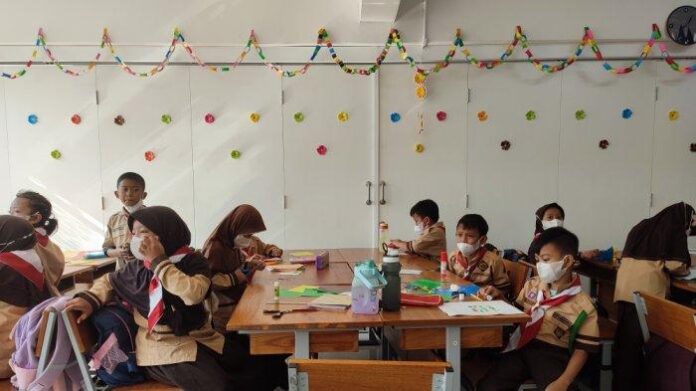In an effort to realize low emissions and be environmentally friendly in the DKI Jakarta area, four schools are used as pilot projects for the concept of green building or net zero carbon. The four schools were inaugurated by the Governor of DKI Jakarta, Anies Baswedan.
“Today we are also witnessing a historic event that today we are officially in Jakarta as the first public school that carries the concept of green building and net zero emissions,” said Anies at SDN Ragunan 08, South Jakarta, on Wednesday (28/9/2022).
The four schools that are piloting the net zero carbon project are: SDN Duren Sawit 14, East Jakarta; SDN Grogol Selatan 09, South Jakarta; SDN Ragunan 08 am, 09 am, 11 pm, South Jakarta; and SMAN 96 Jakarta, West Jakarta.
It is said that school buildings are the most owned buildings by the government. The building contributes 39 percent of global carbon emissions and consumes 36 percent of total global energy.
“So, the building is the biggest contributor. We often see that decarbonization is seen as just a motor vehicle, no, in fact, the building consumes 36 percent of energy, contributing to 39 percent of global carbon emissions,” he explained.
The rehabilitation of public school buildings in Jakarta in the future will lead to the concept of green building, starting from the transition of energy with solar panels, the use of energy-saving lamps, to wastewater management.
“We hope that the construction of this net zero carbon school can also encourage Jakarta to achieve the target of net zero emissions or zero carbon emissions by 2050. We are trying to make this city a sustainable city in the future,” he said.
In the construction of a net zero carbon school, the DKI Jakarta Provincial Government is collaborating with GBC Indonesia.
GBC Indonesia helps perform simulations and analyses related to passive designs, especially simulations for airflow patterns on the site, solar radiation on the building envelope, as well as lighting simulations to determine whether the building’s performance is good and can reduce energy use.
The reason is that airflow simulation can help predict the direction and speed of wind in general so that designers can determine the position of openings to maximize natural ventilation.
Simulation of solar radiation on the building envelope helps to identify the building envelope that is exposed to the sun’s heat which can affect the indoor temperature so that the use of air conditioning can be minimized.
In addition, natural lighting is very important in schools because it affects children’s learning performance.
To increase the efficiency of energy use in lighting or lamps, natural sunlight must be utilized while taking into account the thermal comfort in the room.
In principle, the DKI Provincial Government and GBC Indonesia build a net zero carbon school by optimizing the building design.
This is claimed to be able to reduce the need for energy consumption per year (IKE = Energy Consumption Index). This allows the energy supply to rely entirely on renewable energy systems.
The renewable energy system is expected to meet the needs of building energy consumption (IKE) which has been greatly minimized compared to the IKE required by conventional building practices.























